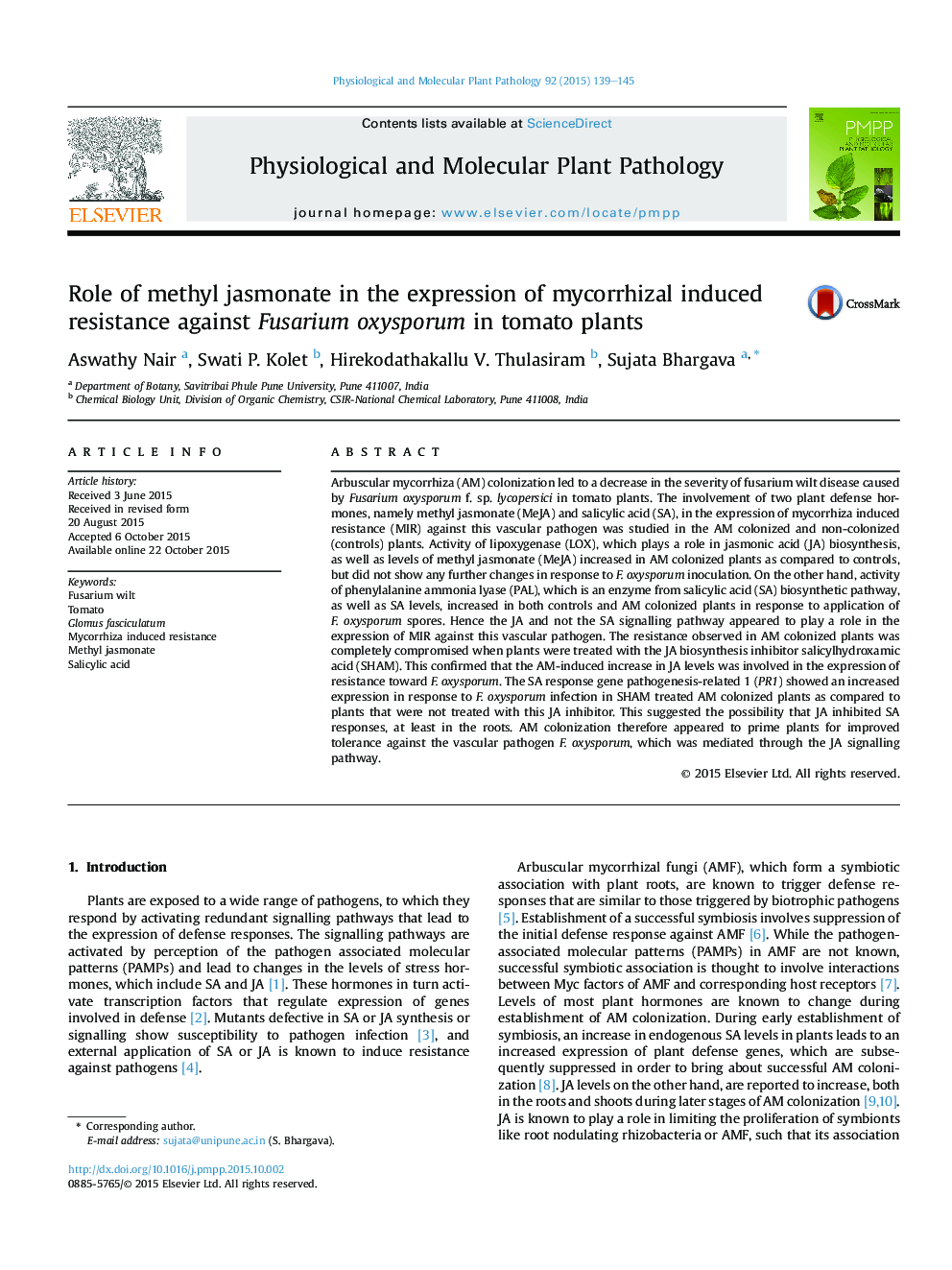| کد مقاله | کد نشریه | سال انتشار | مقاله انگلیسی | نسخه تمام متن |
|---|---|---|---|---|
| 2836253 | 1570847 | 2015 | 7 صفحه PDF | دانلود رایگان |

• AM colonization led to systemic increase in endogenous methyl jasmonate levels.
• AM colonization delayed progression of Fusarium oxysporum in tomato plants.
• F. oxysporum inoculated AM colonized plants showed higher expression of hormone signalling genes as compared to controls.
• JA biosynthesis inhibitor SHAM abolished mycorrhiza-induced resistance.
Arbuscular mycorrhiza (AM) colonization led to a decrease in the severity of fusarium wilt disease caused by Fusarium oxysporum f. sp. lycopersici in tomato plants. The involvement of two plant defense hormones, namely methyl jasmonate (MeJA) and salicylic acid (SA), in the expression of mycorrhiza induced resistance (MIR) against this vascular pathogen was studied in the AM colonized and non-colonized (controls) plants. Activity of lipoxygenase (LOX), which plays a role in jasmonic acid (JA) biosynthesis, as well as levels of methyl jasmonate (MeJA) increased in AM colonized plants as compared to controls, but did not show any further changes in response to F. oxysporum inoculation. On the other hand, activity of phenylalanine ammonia lyase (PAL), which is an enzyme from salicylic acid (SA) biosynthetic pathway, as well as SA levels, increased in both controls and AM colonized plants in response to application of F. oxysporum spores. Hence the JA and not the SA signalling pathway appeared to play a role in the expression of MIR against this vascular pathogen. The resistance observed in AM colonized plants was completely compromised when plants were treated with the JA biosynthesis inhibitor salicylhydroxamic acid (SHAM). This confirmed that the AM-induced increase in JA levels was involved in the expression of resistance toward F. oxysporum. The SA response gene pathogenesis-related 1 (PR1) showed an increased expression in response to F. oxysporum infection in SHAM treated AM colonized plants as compared to plants that were not treated with this JA inhibitor. This suggested the possibility that JA inhibited SA responses, at least in the roots. AM colonization therefore appeared to prime plants for improved tolerance against the vascular pathogen F. oxysporum, which was mediated through the JA signalling pathway.
Journal: Physiological and Molecular Plant Pathology - Volume 92, October 2015, Pages 139–145